Embarking on apple cultivation can be a fruitful endeavor in terms of profits and satisfaction. India boasts diverse apple varieties, each with its unique flavor profile and growing requirements. From the crisp sweetness of Red Delicious to the aromatic charm of Ambri, these apple varieties offer a spectrum of taste experiences. I
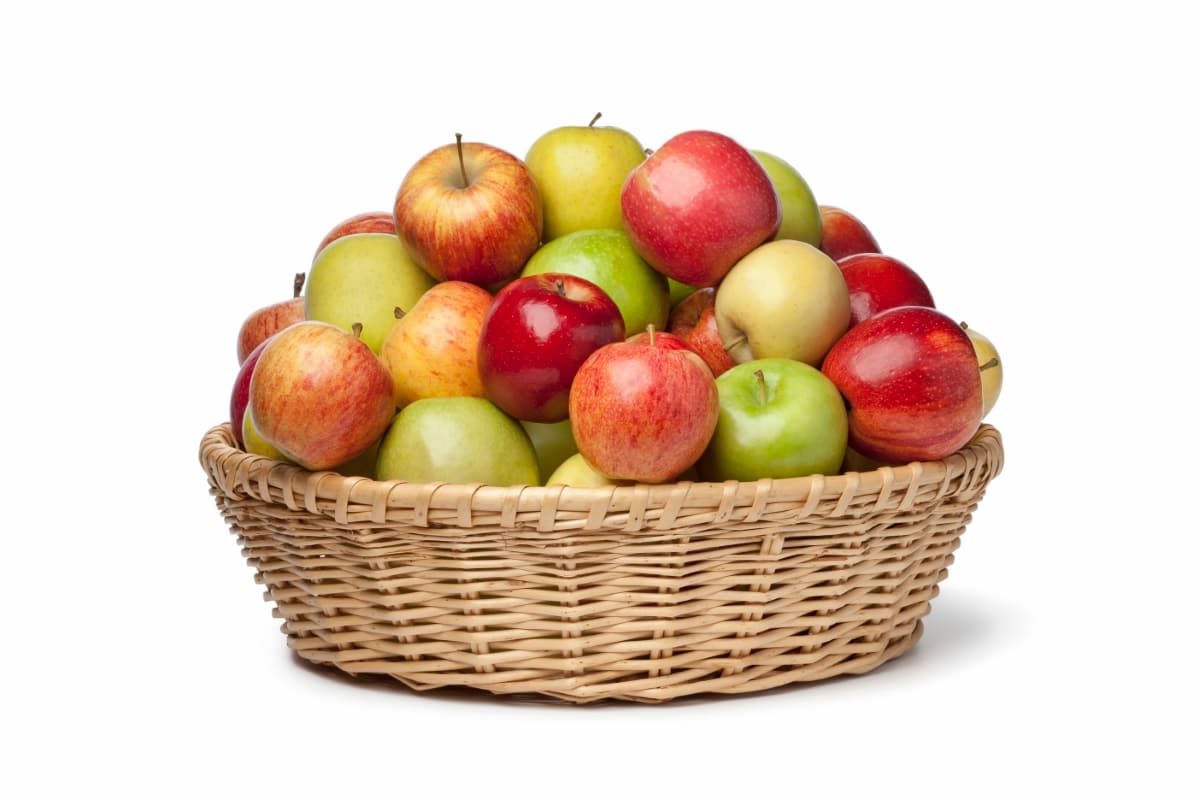
n this blog, we’ll explore the top 20 apple varieties in India that promise high profits and the joy of nurturing these delectable fruits. Whether you’re a seasoned orchardist or a novice with a green thumb, this guide will steer you toward success in your apple-growing journey.
What is Apple Farming?
Apple, a highly consumed and profitable fruit, boasts health benefits and deliciousness. Belonging to the Malus genus in the rose family, it flourishes in temperate climates, requiring proper dormancy, well-drained soil, pruning, and pest management for optimal growth. Its versatility is notable; apples are enjoyed fresh or incorporated into dishes like salads and cakes.
Reverberating the adage “an apple a day keeps the doctor away,” doctors often recommend apples due to their nutritional richness. Loaded with vitamins A and C, carbs, and fiber, apples are vital for overall health. Major apple producers include the U.S., China, France, Italy, and Turkey, with China reigning as the top contributor. In India, multiple states partake in apple cultivation.
Apple plantation occurs during January and February. The prime apple fruit season spans from September to October. Jammu & Kashmir stands as India’s largest apple producer. The optimal soil pH for apple farming ranges from 5.5 to 6.5. Notable apple-based dishes encompass Crumbles, Juice, and Pie, adding to the fruit’s versatility and culinary appeal.
Apple Producing States in India
- Jammu and Kashmir: This state takes the lead, accounting for 77.71% of India’s apple production, yielding about 1808.33 tonnes.
- Himachal Pradesh: With a share of 19.19% in global apple fruit production, Himachal Pradesh boasts unique varieties such as Mollies, Gala, Anna, and Rich-e-Red, contributing significantly to India’s apple output.
- Uttarakhand: This state contributes approximately 2.52% to India’s apple cultivation. Efforts by the government to enhance production techniques in the Dehradun region are aiding growth. Last year, Uttarakhand produced 58.66 tonnes of apples.
- Arunachal Pradesh: Making its mark, Arunachal Pradesh adds 0.32% to India’s apple production. Securing the 3rd position, the state produced 7.35 tonnes of apples.
- Nagaland: Despite a modest 0.09% share in global apple production, Nagaland’s marginal farmers find growing apples lucrative, generating 1.99 tonnes of apple production.
- Tamil Nadu: On the list with a smaller share, Tamil Nadu contributes 0.01 tonnes of apples. The state’s favorable climate conditions with low temperatures promise increased production in the future.
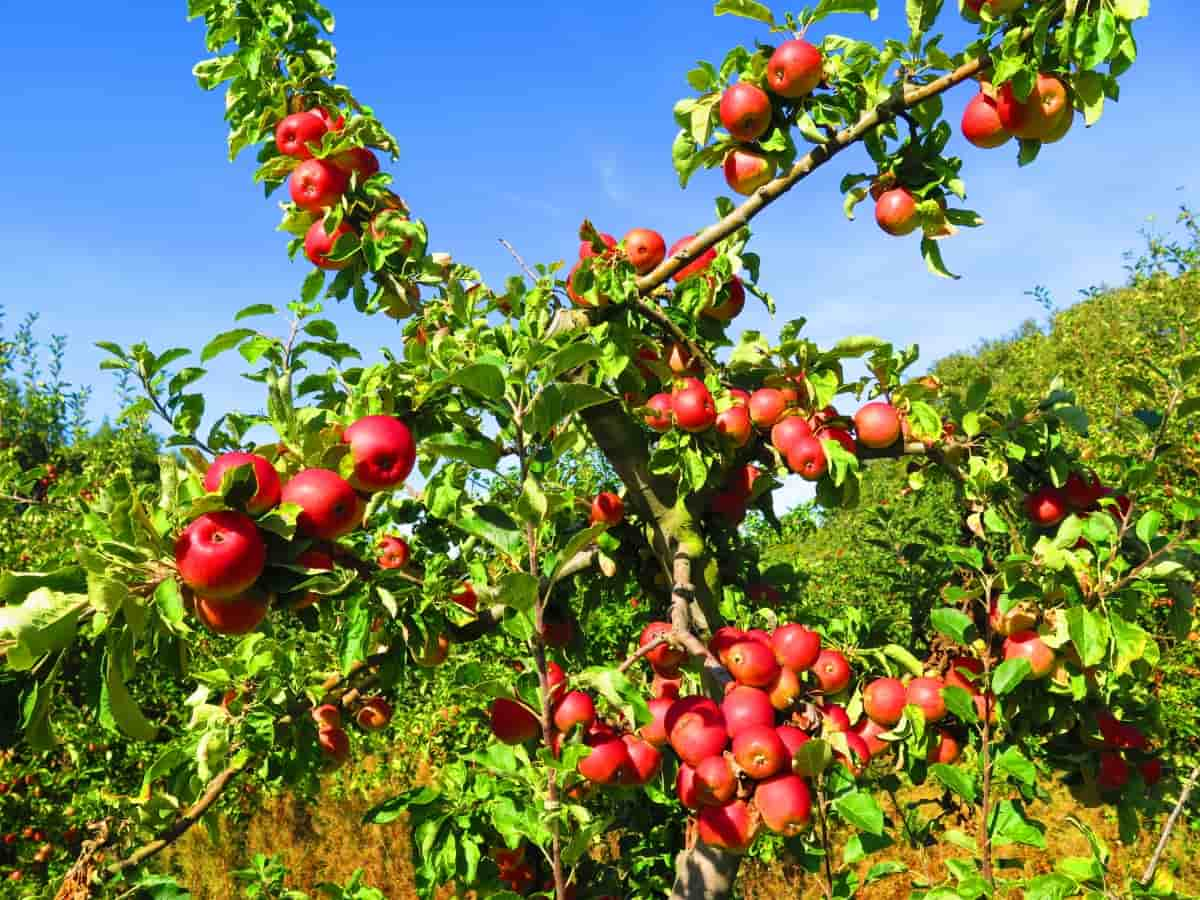
Commercially Cultivated Varieties of Apple in India
In apple cultivation, diverse strategies are embraced to maximize success. Clonal rootstocks such as M 7, M 9, M 26, MM 11, and MM 106 ensure optimal growth. Resilience against scab is achieved through Liberty, Florina, Prima, Priscilla, and more. Hybrid variations like Chaubattia Anupam and Lal Ambri merge genetic excellence from Early Shanburry, Red Delicious, and Ambri.
Low-chilling varieties like Schlomit, Tropical Beauty, and Vered thrive in varying climates, while pollinating cultivars such as Mc Intosh and Golden Delicious contribute to prolific orchard yields. These selections showcase the intricate web of apple diversity, fusing genetic traits to yield resilience, taste, and economic viability. From scab-resistance to low-chilling adaptability, this assortment embodies the intricate science and artistry behind India’s thriving apple industry.
Techniques and Practices of Apple Cultivation in India
- Climate Requirements: Ideal altitudes range from 1,500 to 2,700 meters above sea level. The optimal temperature lies between 21°C and 24°C. Annual rainfall of 100 to 125 cm is suitable, with caution against excessive rain and fog during fruit maturation to prevent quality reduction and fungal issues. High-velocity winds are also unfavorable.
- Soil Conditions: Loamy soils rich in organic matter and a pH of 5.5-6.5 foster robust apple growth. Well-drained soil prevents waterlogging and contributes to quality fruit yield.
- Propagation: Commercial propagation involves tongue grafting and budding. Planting materials are sourced from nurseries.
- Planting and Spacing: Plant density ranges from low (less than 300 saplings/ha) to extremely high density (more than 1300 saplings/ha). Various planting methods like Square, Hexagonal, or Contour systems are chosen based on the terrain.
- Apple Planting Method: Planting methods differ based on area and climate. Pollinators are strategically planted among the main species, and specific fertilizers are applied during planting.
- Manures and Fertilizers: Balanced nutrient ratios are crucial. Proper fertilization involving farmyard manure and balanced doses of N, P, K, Boron, Zinc, Manganese, and Calcium support apple growth.
- Weed Management: Herbicides like Gammaxone/Paraquat or glyphosate help control weeds.
- Apple Irrigation: Adequate irrigation, around 115 cm annually, scheduled at intervals, is vital for fruitful apple farming.
- Apple Harvesting: The prime harvesting time is September-October, beginning around the 8th year of tree age. Apples are picked slightly before full ripeness.
- Post-Harvest Management: Activities after harvesting include pre-cooling, grading, storage, packing, transportation, and marketing.
- Pre-cooling: Apples are cooled in ventilated spaces to remove field heat before packing.
- Grading: Apples are sorted based on size, appearance, and quality.
- Storage: Cold storage at 1.10 to 00°C and 85-90% humidity preserves apples for 4 to 8 months.
- Packing: Wooden boxes carrying 10 kg or 20 kg of fruit are commonly used.
- Transportation & Marketing: Trucks transport apples to local markets and agents.
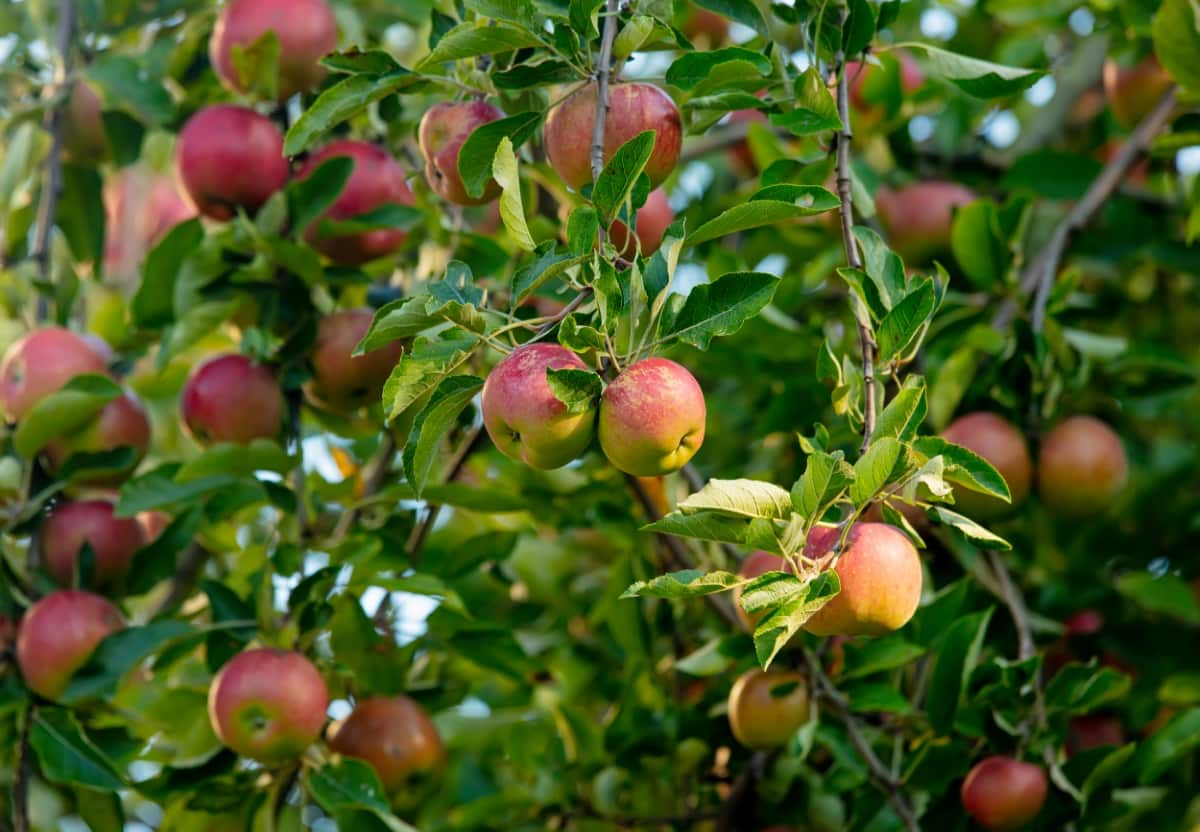
Special Spacing and Growing Methods for Apple Farming
Growing and planting apples involves various techniques to ensure successful cultivation. Apples are usually propagated through tongue grafting and budding, sourced from reputable nurseries. Alternatively, apples can be grown from seeds, including collecting seeds, moistening them in a paper towel, and cold stratifying for 30 to 50 days.
Planting typically occurs in winter, between January and February, capitalizing on the cool climate that benefits apple growth. Apples can be planted in square or hexagonal patterns, varying for hilly or valley regions. Proper pit preparation includes mixing manure, malathion dust, and superphosphate. Irrigation after transplantation and the presence of pollinators enhance fruit production.
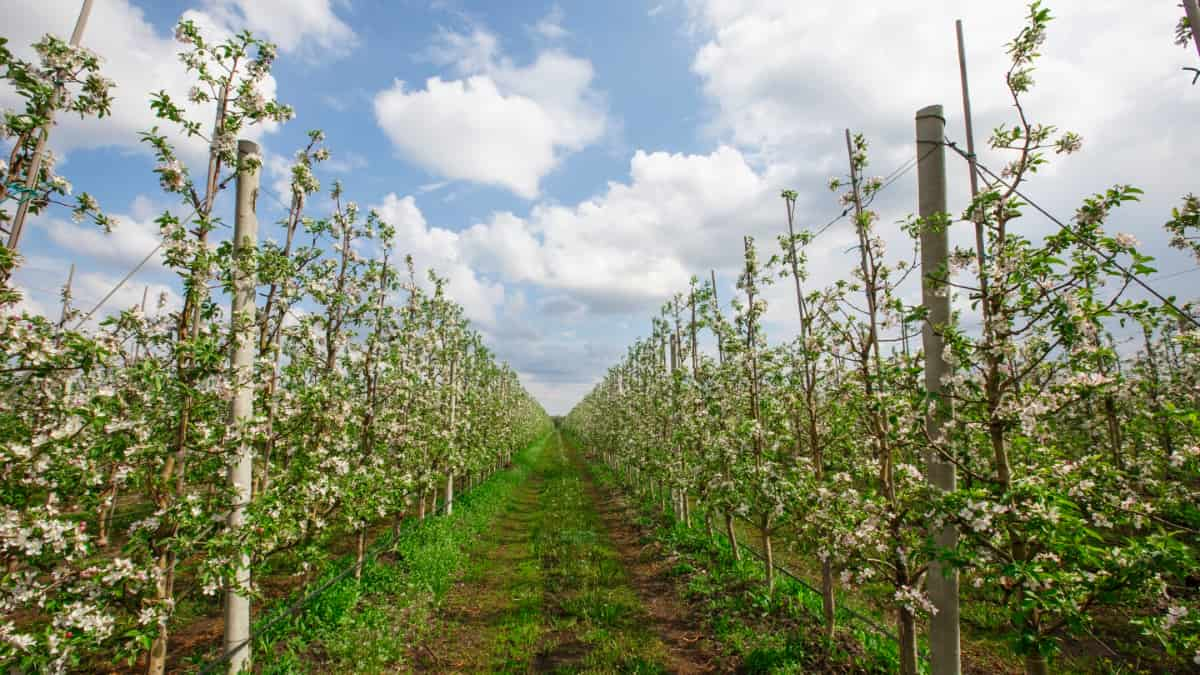
Spacing varies based on apple variety and planting method, offering flexibility from ultra-high density (1200 plants/hectare) to low density (300 plants/hectare). The chosen planting density affects yield and resource management. These practices empower growers to determine the apple tree population per unit of land, aligning with their goals and cultivating conditions. Successful apple cultivation demands meticulous attention to planting methods, spacing, and environment to ensure a fruitful harvest.
Top 20 Apple Varieties in India for Getting High Profits
Ambri Apple
Hailing as a pride of the Kashmir valley, Ambri apples boast a distinctive charm. Their unique flat base sets them apart. Bite into their cream-colored, crispy flesh to encounter a delightful firmness complemented by a pronounced floral essence. The apple’s visual appeal lies in its green-hued peel adorned with fetching red stripes. Notably, the Ambri apple excels in keeping quality, promising a lasting enjoyment of its remarkable taste and texture. A true gem among apple varieties, Ambri stands as a testament to India’s apple orchards’ rich diversity and flavors.
McIntosh Apple
- Appearance: Mix of red-green skin and off-white flesh.
- Taste: Sweet-tarty.
- Uses: Raw consuming, cooking, desserts, and pies.
- Regions: Grows in Uttaranchal, UP, and Himachal Pradesh.
McIntosh apples, celebrated for their enduring popularity, showcase a vibrant red-green skin and reveal off-white, tender flesh. With a harmonious blend of sweetness and tartness, their flavor shines whether consumed fresh or integrated into culinary delights. Native to Canada, these apples thrive in Uttaranchal, UP, and Himachal Pradesh in India.
Granny Smith
- Appearance: Grass-green peel with white dots.
- Taste: Crunchy, juicy, tarty-acidic.
- Uses: Processing pies, cakes, and pastries.
- Regions: Mainly in Himachal Pradesh.
Their unique tarty-acidic flavor offers a refreshing twist, complementing a satisfying crunch. They excel in pies, cakes, and pastries, perfect for culinary creativity. These apples hail primarily from Himachal Pradesh and boast high antioxidants and phenols, enhancing their nutritional value. Their distinct appearance, crisp texture, and tangy taste make Granny Smith apples a preferred choice.
Golden Delicious
- Appearance: Pale green-yellow skin.
- Taste: Sweet, semi-firm texture.
- Uses: Salads, apple butter, sauce.
- Regions: Jammu, Kashmir, Himachal Pradesh.
The sweetness of their flavor and semi-firm texture make them an ideal choice for various culinary creations. From enriching salads to crafting delectable apple butter and sauce, Golden Delicious apples exhibit remarkable versatility.
Honeycrisp
- Appearance: Crispy and juicy.
- Taste: Sweet-tangy.
- Uses: Raw consumption, beverages
With a perfect blend of sweetness and tanginess, they are sought after for their refreshing flavor. These apples retain texture even after prolonged storage, making them preferred for raw consumption and beverages. Honeycrisp apples’ ability to maintain their satisfying crunch and appealing taste over time sets them apart, offering a unique.
Sunehari
- Appearance: Yellow peel with crimson streaks.
- Taste: Sweet-acetous.
- Regions: Hybrid developed in India.
Their crunchy and juicy flesh delights with a harmonious, sweet-acetous taste. This unique combination of flavors and their distinctive appearance makes Sunehari apples a captivating choice. Developed in India, they bring local innovation to the Apple world.
Lal Ambri
- Appearance: Cream-white pulpy flesh, crisp texture.
- Taste: Sweet-juicy.
- Regions: Jammu and Kashmir.
Lal Ambri apples, a crossbreed of Red Delicious and Ambri, boast cream-white, crisp flesh with a sweet-juicy profile. Indigenous to Jammu and Kashmir, these apples captivate with their unique blend of tenderness and flavor. Lal Ambri apples offer a distinctive tasting experience with a delightful sweetness and a hint of juiciness.
Chaubattia Anupam
- Appearance: Glossy skin with vertical red stripes.
- Taste: Sweet-tangy with distinctive aroma.
- Regions: Uttar Pradesh, Uttaranchal.
Chaubattia Anupam apples captivate with glossy skin adorned by vivid red stripes. Their sweet-tangy flavor carries a distinctive aroma, setting them apart. Flourishing in regions like Uttar Pradesh and Uttaranchal, these apples offer a unique taste experience. Chaubattia Anupam apples become a sought-after choice with their appealing appearance and aromatic profile.
Red Delicious
- Appearance: Dark red, oblong-conical shape.
- Taste: Mild-sweet, tender.
- Uses: Table consumption.
- Regions: Himachal Pradesh.
Red Delicious apples are instantly recognizable by their deep red skin and distinctive oblong-conical shape. With a tender and mildly sweet flavor, these apples are ideal for direct consumption, adding sweetness to your day. Their popularity is attributed to their visually appealing appearance, making them a staple in fruit baskets and displays. They thrive in the enchanting landscapes of Himachal Pradesh.
Tydeman’s Early
- Appearance: Red scarlet skin with yellow-green base.
- Taste: Tarty-sweet with floral note.
- Uses: Salads, desserts.
- Regions: Himachal Pradesh, J&K.
Fuji Apple
- Appearance: Pale red-green skin, round shape.
- Taste: Sweet, crispy texture.
- Uses: Raw consumption, longer shelf life.
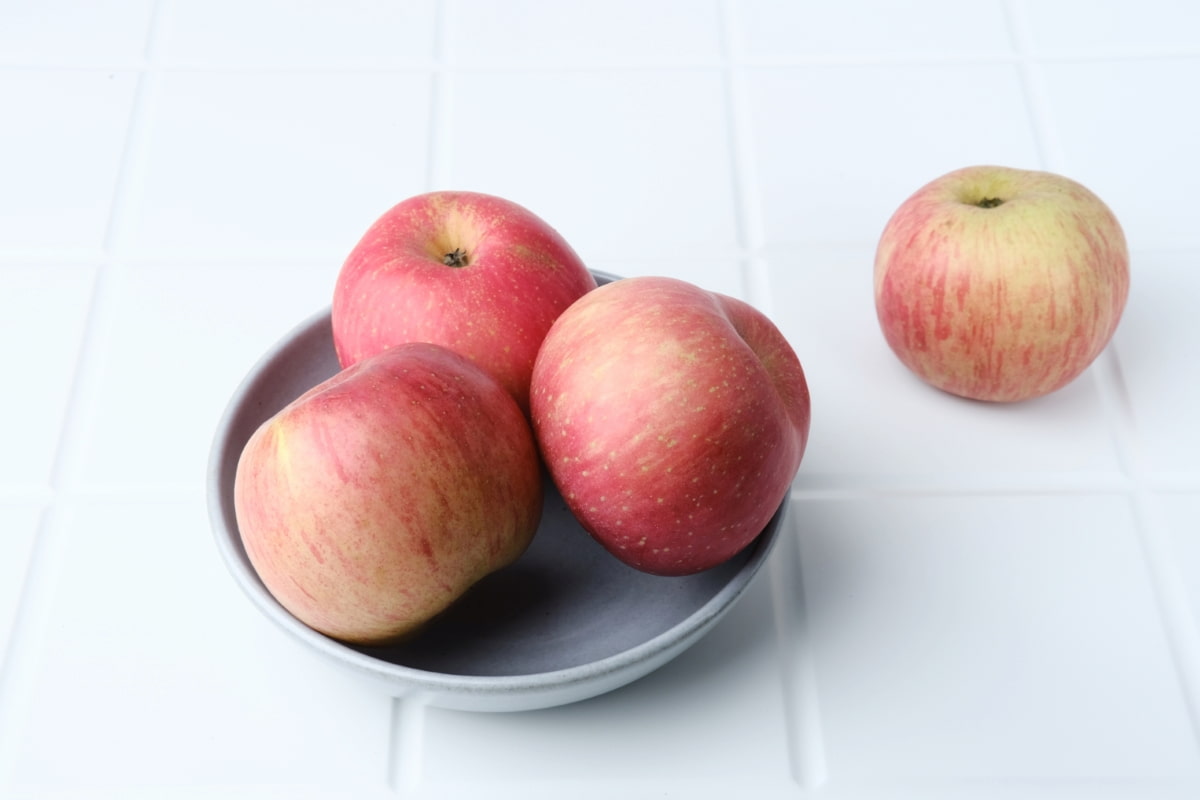
Red Gold
- Appearance: Shiny, deep red skin, yellow flesh.
- Taste: Sweet.
- Origin: USA, suitable for India.
Golden Spur
- Appearance: Crispy flesh.
- Regions: Himachal Pradesh.
- Other spur apple cultivars: Red Spur, Starkrimson, Red Chief, and Oregon Spur.
Parlin’s Beauty
- Appearance: Suitable for processing.
- Regions: Tamil Nadu.
- Known for Popular and profitable cultivation.
Gala Apple
- Appearance: Comparatively larger, sweet, juicy.
- Uses: Snacks, juices, salads.
- Regions: Suitable for different regions.
Irish Peach
- Taste: Sweet-tangy with a peach note.
- Regions: Jammu & Kashmir.
Starking Delicious
- Appearance: Pale green skin with crimson stripes.
- Taste: Pleasant with a hint of honey.
- Regions: Himachal Pradesh, Uttar Pradesh.
Mollies Delicious
- Appearance: Firm, crispy flesh, white-greenish color.
- Regions: Himachal Pradesh, J&K.
- Special: Extended cold storage life.
Benoni
- Appearance: Greasy skin, red-orange streaks.
- Taste: Tender, sweet, citric kick.
- Regions: J&K, Uttar Pradesh.
Starkrimson
- Appearance: Dark red skin with white flecks.
- Taste: Tangy with a sweet floral note.
- Regions: J&K, Himachal Pradesh, Uttarakhand, UP.
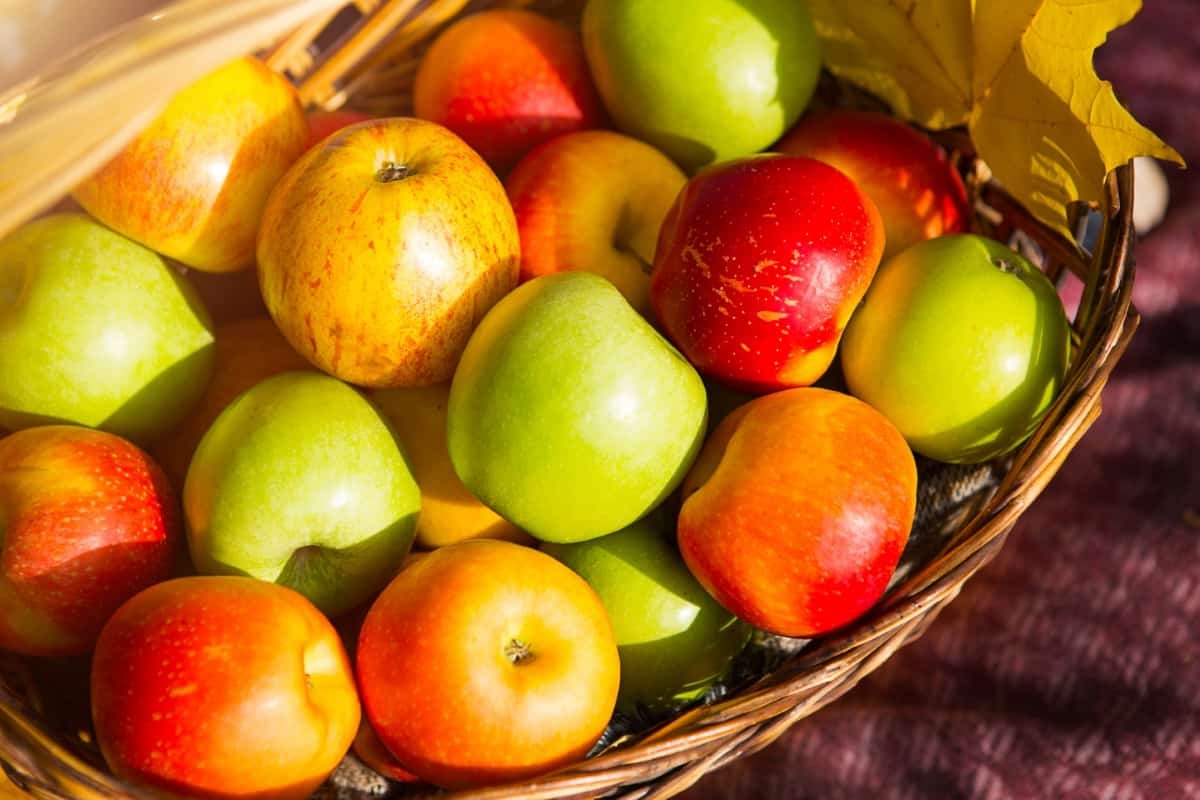
Conclusion
In the diverse landscape of Indian apple cultivation, these top 20 varieties stand as a testament to the richness of flavors and profits that can be reaped. From the iconic McIntosh to the exotic Sunehari, these choices promise both taste and economic success.
- Types of Pesticides Used in Agriculture: A Beginner’s Guide
- Economical Aquaculture: A Guide to Low-Budget Fish Farming
- 15 Common Planting Errors That Can Doom Your Fruit Trees
- How to Make Houseplants Bushy: Effective Tips and Ideas
- Innovative Strategies for Boosting Coconut Pollination and Yield
- Pollination Strategies for Maximum Pumpkin Yield
- The Complete Guide to Chicken Fattening: Strategies for Maximum Growth
- Natural Solutions for Tulip Problems: 100% Effective Remedies for Leaf and Bulb-Related Issues
- Revolutionizing Citrus Preservation: Towards a Healthier, Greener Future
- Natural Solutions for Peony Leaf and Flower Problems: 100% Effective Remedies
- Maximizing Profits with Avocado Contract Farming in India: A Comprehensive Guide
- Natural Solutions for Hydrangea Problems: 100% Effective Remedies for Leaf and Flowers
- The Ultimate Guide to Choosing the Perfect Foliage Friend: Bringing Life Indoors
- From Sunlight to Sustainability: 15 Ways to Use Solar Technology in Agriculture
- The Ultimate Guide to Dong Tao Chicken: Exploring from History to Raising
- The Eco-Friendly Makeover: How to Convert Your Unused Swimming Pool into a Fish Pond
- Mastering the Art of Delaware Chicken Farming: Essentials for Healthy Backyard Flocks
- 20 Best Homemade Fertilizers for Money Plant: DIY Recipes and Application Methods
- How to Craft a Comprehensive Free-Range Chicken Farming Business Plan
- Brighten Your Flock: Raising Easter Egger Chickens for Beauty and Bounty
- How to Optimize Your Poultry Egg Farm Business Plan with These Strategies
- Subsidy for Spirulina Cultivation: How Indian Government Schemes Encouraging Spirulina Farmers
- Ultimate Guide to Raising Dominique Chickens: Breeding, Feeding, Egg-Production, and Care
- Mastering the Art of Raising Jersey Giant Chickens: Care, Feeding, and More
- Ultimate Guide to Raising Legbar Chickens: Breeding, Farming Practices, Diet, Egg-Production
- How to Raise Welsummer Chickens: A Comprehensive Guide for Beginners
- How to Protect Indoor Plants in Winter: A Comprehensive Guide
- Ultimate Guide to Grow Bag Gardening: Tips, Tricks, and Planting Ideas for Urban Gardeners
- Guide to Lotus Cultivation: How to Propagate, Plant, Grow, Care, Cost, and Profit
- Agriculture Drone Subsidy Scheme: Government Kisan Subsidy, License, and How to Apply Online
- Ultimate Guide to Raising Araucana Chickens: Breed Profile, Farming Economics, Diet, and Care
- Bringing Hydroponics to Classroom: Importance, Benefits of Learning for School Students
- Ultimate Guide to Raising Polish Chickens: Breed Profile, Farming Economics, Diet, and Care
- Ultimate Guide to Raising Australorp Chickens: Profile, Farming Economics, Egg Production, Diet, and Care
- Silkie Chicken Farming: Raising Practices, Varieties, Egg Production, Diet, and Care
- Sussex Chicken Farming: Raising Practices, Varieties, Egg Production, Diet and Care